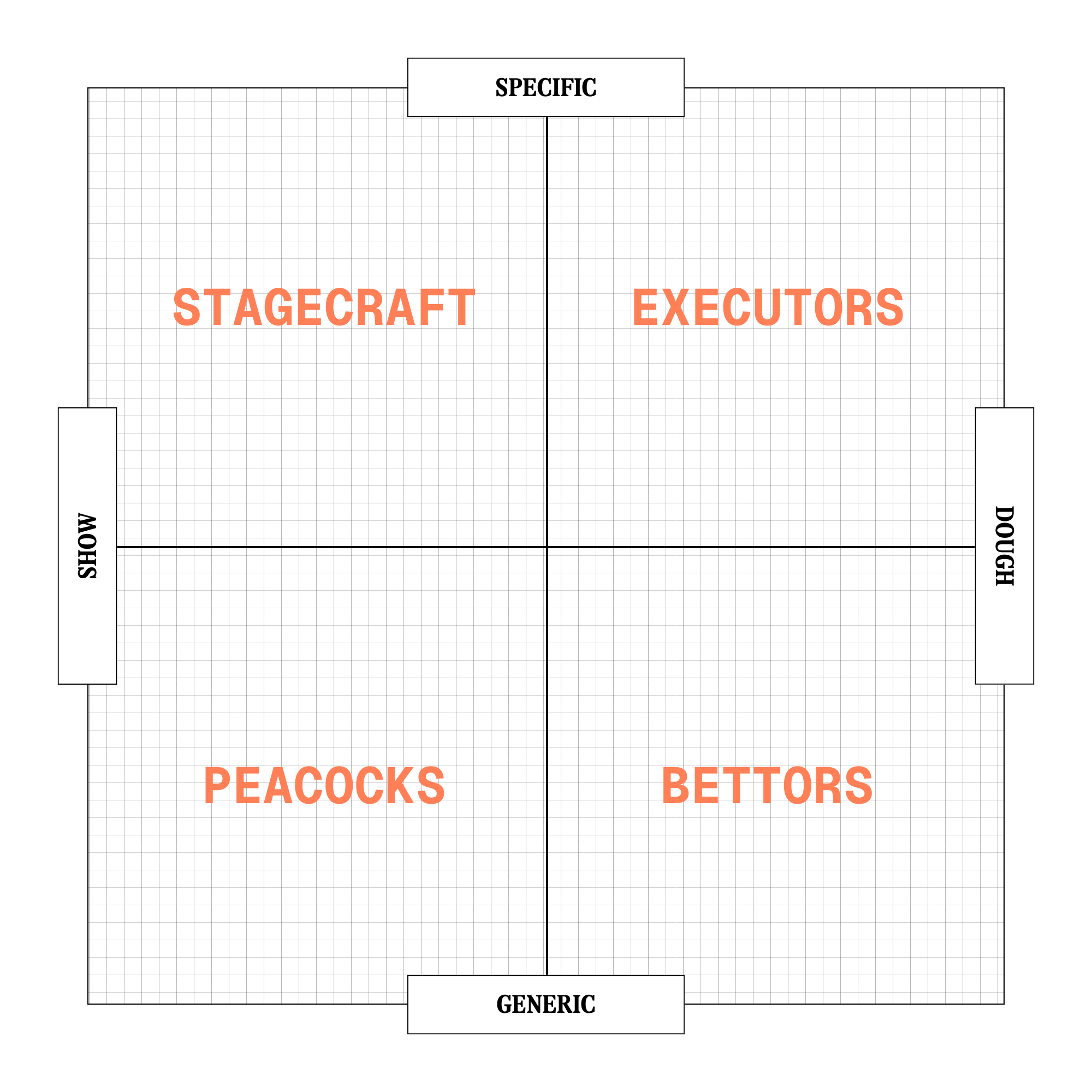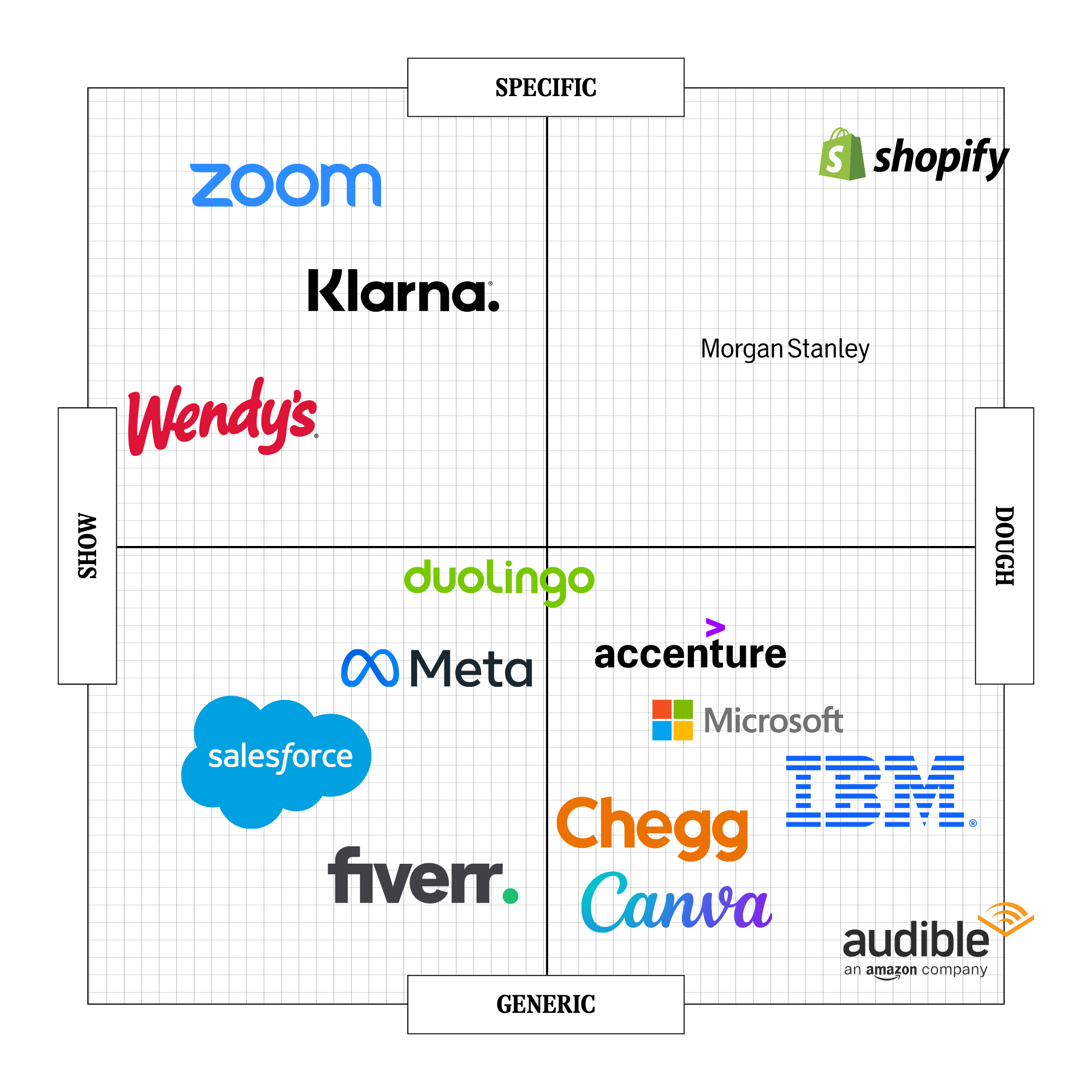A few years ago, the question was whether AI would transform work. Today, the default assumption is that every task starts with it. At Alephic, we captured that shift with a Slack shorthand: WWGPTD — What Would GPT Do? We began replying to messages with it to remind one another to run an AI‑first pass before asking teammates for help. The goal is to remove any stigma: using AI isn’t cheating; it’s step zero in modern knowledge work. We even liked it enough that we printed some bracelets so it always stays top of mind.

Alephic Newsletter
Our company-wide newsletter on AI, marketing, and building software. Subscribe to receive all of our updates directly in your inbox.
(BTW, if you want a bracelet, you can request it here. We’re mailing some out.)
From IBM's headline‑grabbing 2023 hiring freeze to the latest AI-driven mandates from companies like Shopify and Duolingo, one thing is clear: the volume around AI continues to rise. But not all of these announcements carry equal weight. Some signal real shifts in how work gets done. Others are press releases dressed up as transformation. The challenge isn’t just tracking the wave—it’s knowing which signals matter.
Two Years of AI Mandates
• May 2023 – IBM: Hiring freeze on 7,800 back‑office roles.
• Feb 2025 – Salesforce: Engineering hiring freeze, “last gen of CEOs to manage only humans.”
• Jan 2025 – Meta: Zuckerberg says AI will code like mid‑level engineers this year.
• Apr 2025 – Shopify: Lütke: prove AI can’t do it before adding headcount.
• Apr 2025 – Duolingo: Memo to replace contractors with AI (walk‑back days later).
• Apr 2025 – Fiverr: Email: “AI is coming for your jobs—and mine.”
• May 2025 – Klarna: CEO avatar delivers earnings after 700 service layoffs.
• May 2025 – Zoom: AI twin hosts quarterly call.
• May 2025 – Audible: AI‑narrated titles added despite voice‑actor pushback.
These flashpoints show how fast the rhetoric has escalated—and how uneven the follow‑through can be.
Early Mandates in Detail
Before we drop each company onto a matrix, here are four mandates that reveal how leaders framed AI long before the hard execution caught up.
IBM — In May 2023, CEO Arvind Krishna froze hiring for about 7,800 back‑office roles, arguing that up to 30 % might be automated within five years. The freeze followed a 3,900-person layoff tied to divestitures, leading critics to view it as more cost-cutting than future-proofing.
IBM’s AskHR chatbot now resolves roughly 94 % of routine HR tickets, displacing “several hundred” staff. Yet Computerworld reports “little evidence of company‑wide AI re‑architecture,” and PeopleMatters notes IBM rehired in sales and engineering, leaving the 30 % figure looking more like narrative management than execution. In short, IBM is acting like a bettor—wagering serious capital on AI without yet revealing the playbook that would make the gamble pay off in daily operations.
Shopify — Fast-forward nearly two years, and Tobi Lütke’s directive stands out as a rare case of operational clarity from a technically credible founder. Lütke—widely respected as a builder and technologist—didn't just signal enthusiasm for AI; he rewrote his hiring policy around it. Teams must now prove AI can’t do the job before they request headcount. It wasn’t marketing—it was method. His framing of 'What Would GPT Do?' repositions AI not as an exception, but as the default expectation.
Compared to IBM’s ambiguous freeze, Lütke’s memo reads like a practical blueprint for driving AI into daily operations. In other words, Shopify is acting like an executor, turning rhetoric into an enforceable process that managers can follow today.
Duolingo — Luís von Ahn's memo systematizes replacement: contractors out wherever AI suffices, resources redirected to breakthrough capabilities.
"We’re becoming an AI-first company. That means if AI can do something, we’re going to let it—whether that’s content generation, support, or even code. This isn’t about saving money. It’s about focusing our people on what only they can do."
The subsequent clarification, which walked back the harsher elements of the memo just days later, raises questions of credibility. As von Ahn clarified, "No one is losing their job to AI," and the changes only affected a small number of contract roles. But when you pivot that quickly, it’s hard to believe a company is serious about becoming AI-first if it can’t stand by its vision for more than a week. Business Insider reports that AI use is being incorporated into performance reviews and headcount planning, but without durable policy changes or a consistent mandate, it's unclear whether this represents a true operational shift or a reactive PR effort. The episode feels more like peacocking—flashy posture that couldn’t hold its form under scrutiny.
Zoom — Eric Yuan didn’t just talk about AI—he shipped it. In May 2025, his AI twin presented the Q1 earnings call, reading scripted remarks and fielding pre‑vetted questions. Yuan called it “a glimpse of how work feels when AI attends the meetings you don’t want to.” The avatar is built on Zoom’s in‑house AI Companion stack, which already summarizes calls and drafts follow‑ups. Zoom has published a timeline to roll out customer‑grade avatars later this year, making the demo more than optics. The revenue impact remains unproven, but the company has shipped a real product and tied it to a commercial roadmap—classic stagecraft: detailed, customer-facing showmanship with ROI TBD.
The Taxonomy of Transformation
To navigate this moment, companies need more than headlines—they require a way to distinguish between theater and transformation. As AI mandates pile up, it’s getting harder to tell who’s making real changes and who’s just playing to the crowd. This framework helps decode that signal.
We use a 2 × 2 matrix to chart each company's move along two dimensions:
- Horizontal axis — SHOW → DOUGH SHOW = moves optimized for optics, headlines, and social proof. DOUGH = moves that generate real economic value—cost reduction, new output, or operational leverage.
- Vertical axis — GENERIC → SPECIFIC GENERIC = vague aspirations: “AI-first,” “transforming,” “next-gen.” SPECIFIC = clear frameworks: checklists, policies, flows, tools that others could follow tomorrow.
These axes create four strategic postures:
- Peacocks: (Show + Generic) Flashy language, little follow-through.
- Stagecraft: (Show + Specific) Detailed gestures built for maximum visibility.
- Bettors: (Dough + Generic) Real investment without a real plan.
- Executors: (Dough + Specific) Operational frameworks you can copy and ship.

Where These Mandates Land
A quick set of examples, sorted by how much each move is built for visibility versus real operational impact.

Peacocks — Show + Generic
- Duolingo – CEO memo to replace contractors with AI quickly walked back days later — loud intent, little follow‑through.
- Meta – Mark Zuckerberg’s claim that AI will code like mid‑level engineers by year‑end — visionary, roadmap missing.
- Fiverr – Micha Kaufman’s viral email warning “AI is coming for your jobs—and mine” — rhetoric only.
- Salesforce – Benioff’s engineering hiring freeze paired with “last generation of CEOs to manage only humans” — specifics scarce.
Stagecraft — Show + Specific
- Zoom – Eric Yuan’s AI twin hosted the Q1 2025 earnings call; customer avatars promised later this year.
- Klarna – CEO avatar delivered results after 700 support layoffs; CEO now admits going too far, planning to rehire — theater meets reality.
- Wendy’s – “FreshAI” drive‑thru pilot with Google Cloud — single‑store test marketed as a revolution.
Bettors — Dough + Generic
- IBM – Hiring freeze on 7,800 roles and 30 % automation target — capital wager, playbook fuzzy.
- Microsoft – 6,000 layoffs (~3 %) citing 30 % AI‑written code — streamlining for an AI future.
- Chegg – 22 % workforce cut as students shift to AI tools — pivoting budget to its own AI.
- Canva – Technical writers laid off after months of promoting Gen-AI docs internally.
- Accenture – $3 B commitment to double AI headcount to 80k — sweeping but still vision‑level.
- Audible – AI‑narrated catalog expansion to cut costs and scale — creative strategy opaque.
Executors — Dough + Specific
- Shopify – Tobi Lütke’s “prove AI can’t do it” directive — enforceable policy shaping every hire.
- Morgan Stanley – GPT‑4 assistant rolled out to 15k wealth advisors — live, domain‑specific productivity tool.
The Operating System Update
These aren't isolated policies. They're components of a new organizational operating system where every decision starts with: What Would GPT Do?
The framework is simple:
- Default to AI for any repeatable task — let the system handle everything that can be systematized.
- Amplify your top talent — point AI at your highest‑leverage people so their expertise reaches 10× further, instead of investing time in pulling up the bottom.
- Reinvest the time saved in uniquely human advantages — judgment, strategic imagination, trusted relationships, and the ability to navigate ambiguity.
Of course, rhetoric varies from reality. Some CEOs issue mandates they'll enforce ruthlessly. Others deliver theater. The market will sort signal from noise—what matters is recognizing the pattern, not parsing every proclamation.
What seemed impossible four years ago—building robust software in days, not years—is now the baseline. The stigma around using AI tools isn't just counterproductive; it's competitively fatal.
The Paradox of Progress
To remain irreplaceable, master the tools designed to replace you. But now there's a framework for doing exactly that.
The companies issuing these mandates aren't predicting the future. They're creating the organizational muscle memory for navigating it. Each memo, declaration, and demonstration adds another page to the playbook.
The transformation isn't coming. It's here. The only question is whether you're writing the new rules or still playing by the old ones.